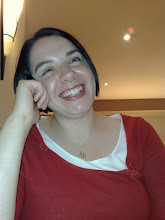As I am a twin, I have lost count of the amount of times I have been asked if I can tell what my sister is thinking, or if I know when she is in trouble or hurt. Unfortunately, I never seemed to know those things even though we were really close.
Telepathy and ESP in its various forms are staples of science fiction literature. Whether they exist in the real world however, has always been more doubtful. Anecdotes are often heard of people who sensed that a distant loved one was in distress, but it is always difficult to know how much faith to put in such personal stories. Unlike most other paranormal phenomena however, which tend to occur with a high degree of randomness and unpredictability, the supposition that unusual psychic powers exist is susceptible to rigorous scientific testing in a laboratory. Many such tests have been conducted and their results are intriguing.
It is best to begin with a definition of terms. Telepathy is psychic communication from one person to another without the normal sensory cues. ESP is similar. It involves the apprehension of knowledge by unconventional means, absent the normal sensory input which usually conveys information, but, in this case, the knowledge does not come from another person.
Experiments
There have been many experiments conducted which have tended to demonstrate that some form of non-sensory perception exists. Typically, the subjects in these experiments are random members of the general public, not people who claim to have special gifts. They are asked to engage in some form of guessing game among a limited set of choices. The results are totted up. The number of correct answers which could have been expected through chance is computed and anything above that is attributed to ESP or telepathy. Problems often arise when other researchers attempt to replicate the results, however. In a typical pattern, suspicions often arise later about methodological flaws in the original study and the results are discounted by sceptics.One of the most famous series of studies took place in the United States in the 1930s when J. B. Rhine conducted experiments using the now-famous Zener cards. These cards contained simple graphics of five types - star, circle, wavy lines, cross and square. Participants in the experiment were asked to guess which card would be dealt next from the pack. Rhine noted that the number of correct guesses was significantly above what would have been expected from chance alone.
Rhine's methodology was later criticised, however. Some claimed that the cards were partially translucent and that, in strong lighting conditions, participants might sometimes have been able to make out the design on the other side of the card.
This ushered in a whole new era of concern about methodology in telepathy and ESP experiments.
Some believed that, through facial expressions for example, researchers might unconsciously provide clues to the experimental subjects; or, indeed, that they might telepathically communicate the correct answer! Because of experiments in which subjects performed at below-chance levels, some even came to believe that pre-existing beliefs about ESP of either the subject or researcher could influence the experimental outcome.
The best solution so far arrived at for these manifold problems is what is known as the Ganzfeld technique. In this procedure, subjects lie on a sofa with their eyes covered and with headphones broadcasting white noise into their ears. A red light is shone on to the subject. Relaxation exercises are performed before testing begins. A "sender" in another room then picks a distinctive image and concentrates on it, trying to communicate it telepathically to the "receiver." After a period of time, the "receiver" emerges from his sensory isolation and is shown a number of images, and asked to judge which one corresponds most closely to any impressions he received during isolation.
Using this technique, the American researcher Charles Honorton demonstrated statistically significant results, validating the existence of telepathic communication. Some have since called his use of statistics and therefore the validity of his results into question, however, so it remains an open issue.
Telepathy Among Family Members
Some of the most striking claims of extra-sensory communication relate to family members, particularly twins. In one experiment which was televised in Britain, an 8-year old boy underwent various experiences while his twin brother sat in a sealed room, hooked up to a lie detector, allowing his physiological state to be monitored. When the first twin placed his hand into some bitterly cold water, the second twin, unaware of what was happening, showed a clear bodily reaction. Again, when the first twin experienced fear as a rubber snake popped suddenly out of a box, the second showed a measurable reaction.

No comments:
Post a Comment